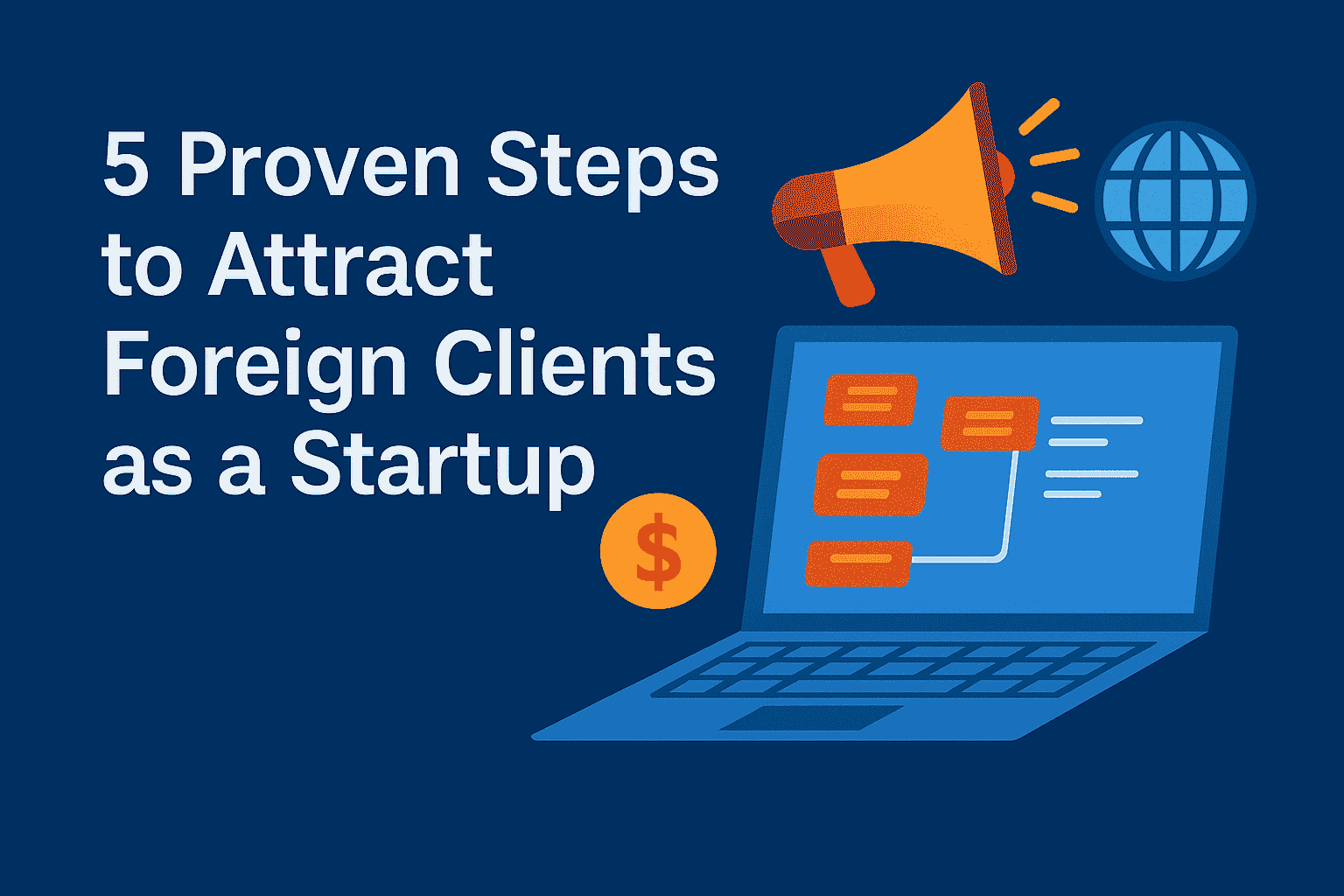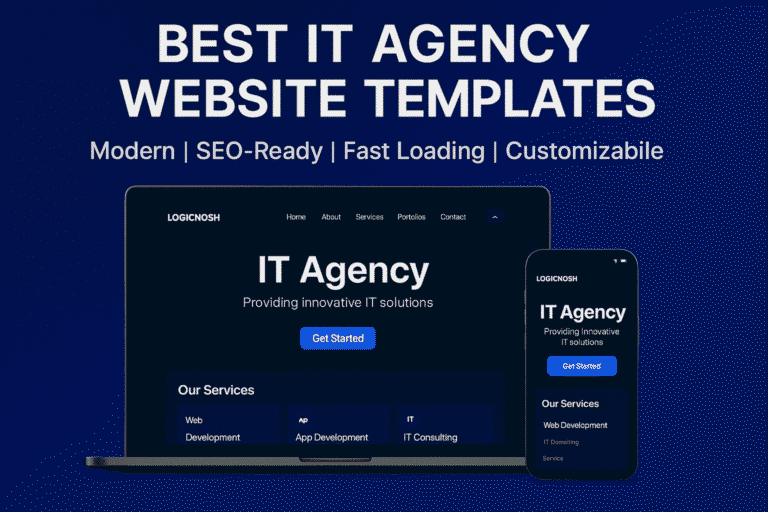How We Successfully Land Foreign Clients: Our Proven 5-Step Strategy as a Small Startup in Pakistan

Introduction
As a small startup in Pakistan, breaking into the international market might seem intimidating. You’re competing globally, often without a big portfolio, global connections, or marketing budget.
But here’s the truth: you don’t need to be big — you just need to be consistent, human, and strategic.
This is the story of how we at LogicNosh started with zero foreign clients and gradually built a pipeline of international projects through Upwork, email outreach, and client-centric communication.
Step 1: Start Where the Clients Already Are — Upwork
The first step in our journey was setting up strong Upwork profiles.
But here’s the catch: just signing up and copy-pasting templates doesn’t work anymore. Instead, we focused on:
- A clean, professional profile
- Clear title (e.g., “Full Stack Web Developer – React | Node | Tailwind”)
- Real project descriptions from our local clients
- Rotating portfolio pieces (tailored by industry: education, booking, ecommerce, AI, etc.)
- When discussing Upwork, link to their official site: https://www.upwork.com
When talking about cold email tips, link to an expert guide like https://www.hubspot.com/cold-email-tips - When referring to proposal writing strategies, link to: https://blog.hubspot.com/sales/sales-proposal
But what really made the difference?
Proposals that sounded human.
Step 2: Writing Human Proposals (Our 6-Step Template)
Instead of writing robotic proposals, we followed a strict but simple template that focused on making the client feel heard.
Here’s our 6-step framework we now use in every job bid:
- Hook Line: Start with a casual, non-boring line (“This sounds like something we’d enjoy building.”)
- Trust Shortcut: “We’ve helped businesses solve similar problems — so you’re in safe hands.”
- Give Before You Ask: Point out one thing that could go wrong in the project and how to avoid it
- Portfolio Links: Share 2–3 relevant links, nicely numbered
- Urgency: “We’re available to start this week.”
- Call to Action: “Want us to send over a quick plan or timeline?”
This simple structure made us stand out.
Step 3: Cold Email Outreach (That Doesn’t Feel Cold)
In parallel, we started a cold email campaign targeting founders, product managers, and small agency owners.
Here’s how we structured our email:
- Personalized subject line (“Saw your project — had a quick idea”)
- 3-sentence body:
- One-liner about us
- One problem we spotted
- Offer to help or send a suggestion
Example:
“Hey John, I saw you’re launching a course platform — I’ve worked with a few early-stage edtech founders who needed scalable dashboards + payment logic. Want me to send over a rough wireframe or tech stack idea?”
These emails worked because they gave before asking.
Step 4: Use Results to Fuel More Results
Once we landed our first few foreign clients, we did everything to make them succeed. We overdelivered, communicated clearly, and asked for feedback.
We then used:
- Client testimonials
- Referrals from satisfied clients
- Recycled case studies in proposals and email campaigns
Each new success made the next client easier to land.
Step 5: Lessons We Learned
Here’s what worked — and what didn’t:
✅ What worked:
- Proposal writing that sounds simple, short, and non-salesy
- Sharing a relevant portfolio link (not everything you’ve ever done)
- Following up without being pushy
- Responding fast (foreign clients love fast replies)
- Emailing founders — not companies
❌ What didn’t:
- Long formal proposals
- Generic cover letters
- Ignoring timezone alignment
- Talking about features instead of business goals
Step 6: From Freelancer to Agency
As we got more leads, we started building a system.
- One person handled bidding full-time (writing proposals, managing leads)
- We added specialists (React dev, Node dev, UI/UX, WordPress, mobile dev)
- We built a Notion CRM to track cold leads, Upwork messages, follow-ups, and client status
Eventually, LogicNosh turned from one-person freelancing into a multi-member startup serving international clients — all remotely from Pakistan.
Final Thoughts
You don’t need to have Silicon Valley connections to get international work.
You just need:
- Clear outreach strategy
- Simple human communication
- Consistent execution
And you can land amazing clients sitting in Karachi, Lahore, or anywhere in Pakistan.
👉 Contact Us and let’s talk about how we can build something great together.
Frequently Asked Questions (FAQs)
Q1: Do I need a fancy website to get foreign clients?
No. We started with a simple Notion page and Upwork profile. Focus on clarity and proof of work, not design.
Q2: What’s the best platform for getting international work?
Upwork for inbound leads. Cold email for outbound. Use both to stay consistent.
Q3: Should I offer low prices to get clients?
Not always. Instead, offer value — point out issues, give free suggestions, and build trust. You can start small but don’t underprice forever.
Q4: How do I build a portfolio with no clients?
Build 3–5 demo projects from scratch. Choose real-world ideas (ecommerce, dashboard, chatbot, etc.). Clients want proof, not perfection.
Q5: What’s the best time to send cold emails?
For foreign clients (US, UK, EU), send between 9–11 am in their timezone. Use tools like Mailtrack or GMass to test timing.
Q6: What if I’m shy to talk to clients?
Write. Use email and Upwork chat to build relationships first. Once trust is built, you’ll feel more confident on calls too.
Q7: How long did it take you to land your first international client?
About 3–4 weeks of consistent bidding and cold outreach. Most people give up too early.
Want to Learn More?
If you’re a developer or startup founder in Pakistan trying to scale your freelance or agency game — feel free to connect.
You don’t need to be “famous” — you just need to show up, send value, and stay human.
Written by the team at LogicNosh
Helping startups scale with clean code, smart design, and simple communication.







